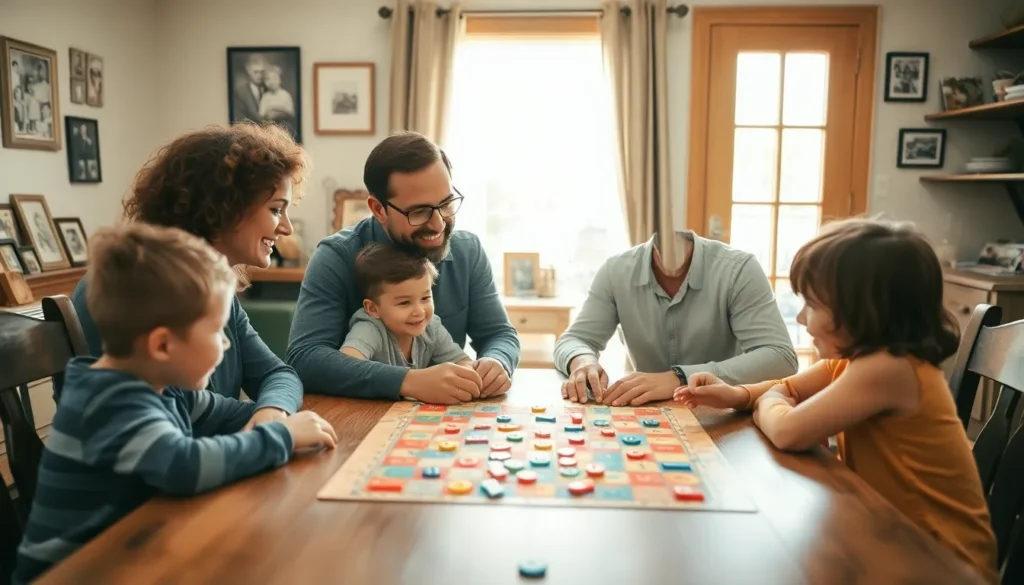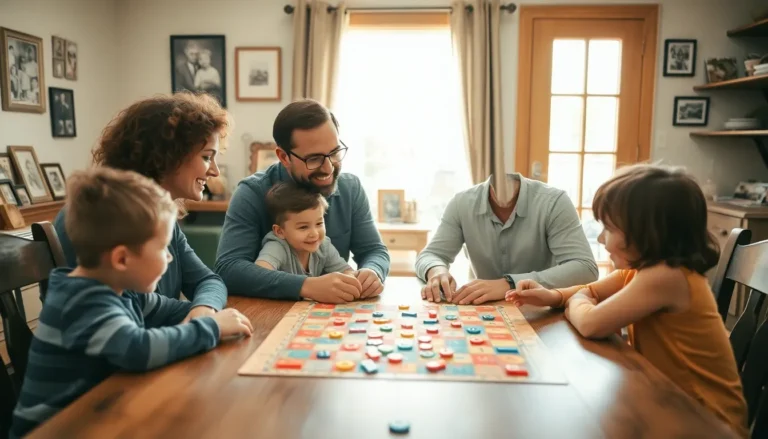Table of Contents
ToggleIn a world where “¿Qué?” is often the most spoken word in language learning, mastering Spanish listening skills can feel like a Herculean task. Picture this: you’re at a lively tapas bar, surrounded by the vibrant sounds of Spanish chatter, and all you can manage is a polite nod and a confused smile. Fear not! With the right techniques, you can transform your listening skills from “lost tourist” to “fluent conversationalist” faster than you can say “taco.”
Importance Of Spanish Listening Skills
Mastering Spanish listening skills proves essential for effective communication. Developing these skills enhances comprehension during conversations and helps individuals engage in the Spanish-speaking community. Understanding spoken Spanish fosters connections with native speakers and improves overall language proficiency.
Listeners acquire cultural insights through attentive listening. Grasping slang, idiomatic expressions, and regional accents deepens communication. Effective listening encourages learning beyond textbooks, exposing learners to real-life contexts and vernacular.
Listening skills facilitate participation in conversations. Confidently grasping nuances allows for smoother interactions. Engaging in dialogues transforms the language-learning experience. Listening also supports critical thinking and interpretation, enabling active participation in discussions.
Strengthening listening capabilities aids in academic and professional settings. Language learners confront various scenarios, from lectures to meetings. Understanding spoken content in these environments enhances retention and promotes success.
Practicing listening skills leads to gradual improvement. Regular exposure to authentic materials, such as podcasts or movies, accelerates the learning process. Immersive experiences, like conversing with native speakers, cultivate familiarity with the language.
Finally, honing listening skills boosts confidence. Confident communication yields greater engagement and opens doors to social opportunities. A solid foundation in listening enables meaningful exchanges and a more enriching language experience.
Key Components Of Effective Listening

Effective listening encompasses several key components that enhance comprehension in Spanish conversations.
Comprehension
Understanding spoken Spanish requires active engagement. Listening closely to context clues helps in grasping the overall message. Contextualizing words in sentences also aids retention. Additionally, recognizing the tone and emotion behind spoken language offers insights into the speaker’s intent. Practicing with varied audio sources, such as podcasts or music, can improve comprehension skills efficiently. Using these strategies enables learners to process information more quickly and accurately.
Vocabulary
Building a strong vocabulary forms the foundation of effective listening. Exposure to new words in various contexts fosters recall and usage. Learning common phrases and idioms enhances conversation fluidity. Integrating vocabulary exercises into daily routines allows for consistent practice. Contextual learning, through listening to native speakers and media, reinforces word meaning and application. This growth leads to improved confidence when encountering unfamiliar terms during conversations.
Pronunciation
Mastering pronunciation significantly impacts listening skills. Accurate pronunciation helps in recognizing and interpreting words correctly. Engaging with native speakers allows learners to discern subtle differences in sounds. Mimicking conversations also aids in developing a more authentic ear for the language. Regular exposure to different accents increases adaptability. These practices contribute to more effective communication by minimizing misunderstandings in spoken Spanish.
Strategies To Improve Spanish Listening Skills
Improving Spanish listening skills involves specific strategies. Utilizing multimedia and engaging with native speakers serves as effective methods.
Practice Through Multimedia
Listening to various audio and visual materials enhances comprehension. Varying platforms like podcasts, movies, and music provides exposure to different accents and slang. Specific recommendations include watching Spanish dramas and listening to podcasts tailored for learners. Combining passive listening while doing other tasks with active listening during focused sessions increases retention. Regularly incorporating these resources aids in developing ear for the language’s rhythm and tone. In turn, this familiarity builds confidence in understanding spoken Spanish.
Engaging With Native Speakers
Participating in conversations with native speakers offers real-world practice. He or she can join language exchange meetups, conversation clubs, or online platforms focused on language learning. Selecting interactions with diverse speakers illuminates different pronunciation and regional variations. Asking questions while conversing encourages deeper engagement and understanding. Encountering slang and colloquialisms during these exchanges helps grasp cultural contexts. Consistently engaging with natives enhances listening skills and fosters a stronger connection to the language.
Challenges Faced By Learners
Many learners face distinct challenges when developing Spanish listening skills. These difficulties can stem from various factors, including accent variations and the use of slang and informal language.
Accent Variations
Spanish features numerous accents that can challenge learners. Differences in pronunciation exist between regions like Spain and Latin America. Native speakers often use rapid speech, which may confuse those still mastering the language. Familiarity with diverse accents aids comprehension significantly. Listening to speakers from different areas through media helps learners to adapt. Exposure to these accents increases understanding and builds confidence in conversing with native speakers.
Slang And Informal Language
Understanding slang and informal language poses another challenge. Informal expressions differ greatly across Spanish-speaking regions. Learners often encounter phrases that don’t translate literally, complicating comprehension. Engaging with authentic materials like movies and music exposes students to everyday language. This listening practice enhances vocabulary and cultural nuances. Familiarity with local slang facilitates smoother communication. Regular practice with these expressions helps learners become more competent in understanding spoken Spanish.
Improving Spanish listening skills is a journey that requires dedication and practice. By actively engaging with diverse audio materials and interacting with native speakers, learners can enhance their comprehension and adapt to various accents and slang. This not only boosts confidence but also fosters meaningful connections within the Spanish-speaking community.
As learners embrace these strategies, they’ll find their listening abilities growing stronger, paving the way for richer conversations and deeper cultural insights. The commitment to mastering listening skills ultimately transforms the language experience, making communication more fluid and enjoyable.







